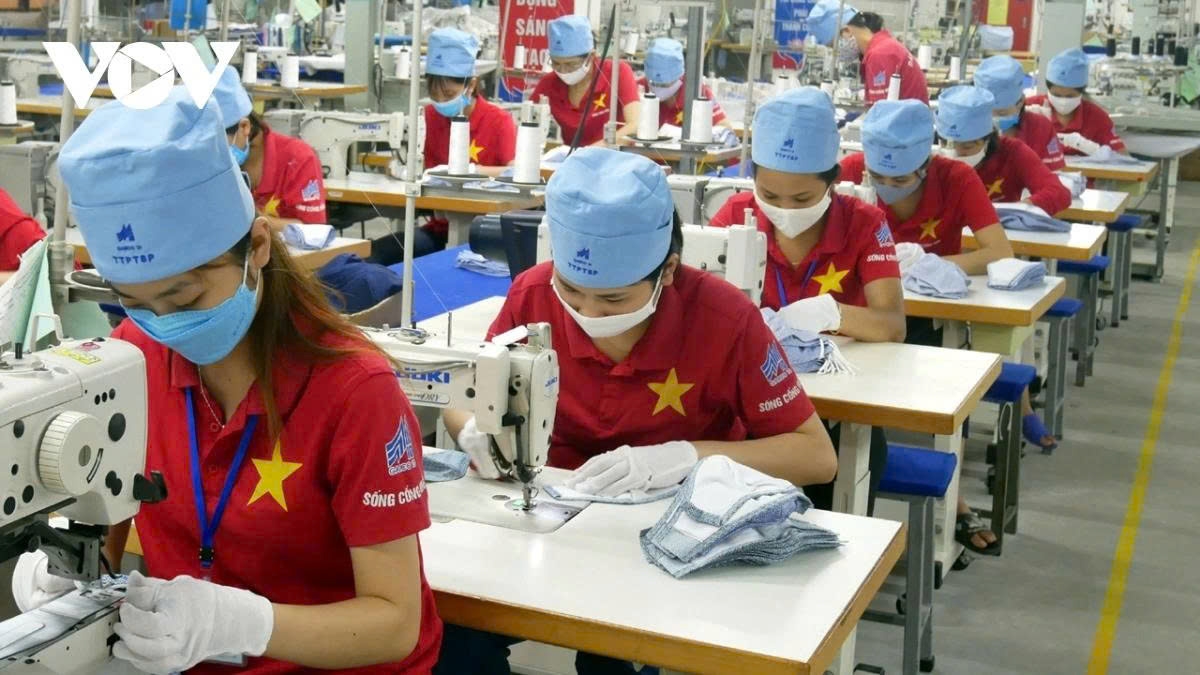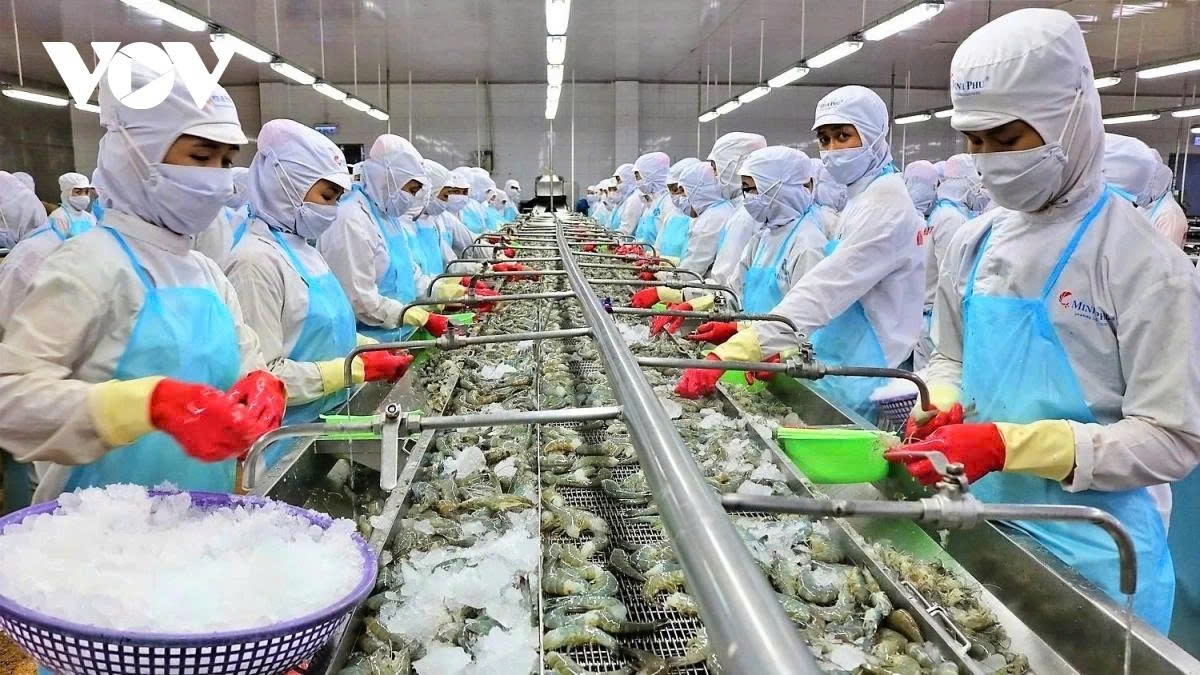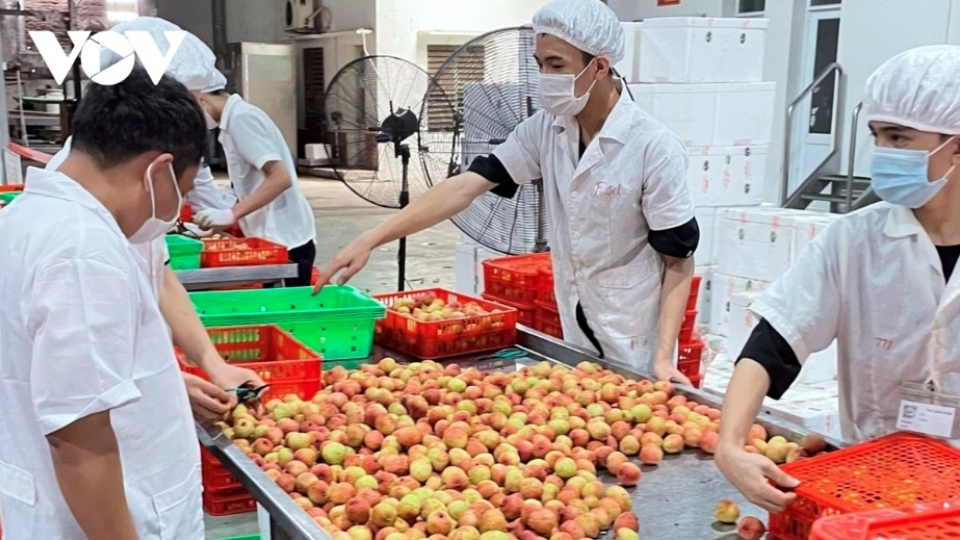Textile, seafood sectors seek to maintain market share amid 20% US tariff imposition
VOV.VN - The US government’s 20% tariff on Vietnamese exports is straining the textile and seafood sectors by raising costs and reducing competitiveness, but industry leaders remain hopeful as businesses can adapt through operational optimisation and market diversification.
Cost-sharing and price negotiations in response to tariffs

Representatives from the textile sector acknowledge that the 20% tariff directly impacts production costs and product prices, thereby reducing Vietnam’s competitiveness in the US market. Nonetheless, since this tariff applies to multiple exporting countries, part of the cost burden is expected to shift to American consumers. In fact, when a temporary 10% tariff was imposed earlier, businesses negotiated cost-sharing across suppliers, manufacturers, and customers.
In anticipation of rising prices, Vietnamese textile companies have renegotiated tariff-sharing terms with clients, depending on cooperation models (FOB or CM) and the strength of each partnership. Simultaneously, they have sought out alternative markets such as Japan, Australia, and China. Many are focusing on high value-added product segments to secure orders for August and September.
However, order flow from the US has slowed considerably. A representative from Hoa Tho Textile and Garment Company reported that orders from American clients for August onward have either dropped sharply or been halted altogether. Importers are reassessing purchasing strategies, inventory levels, and the impacts of the new tariffs. Some have redirected orders to Bangladesh or kept production in China, although there have also been instances of order shifts from China to Vietnam.
Economic impact and policy recommendations
Le Trung Hieu, Deputy Director of the National Statistics Office under the Ministry of Finance, told tienphong.vn that the 20% tariff could cause Vietnam’s exports to the US to decline by US$11–12 billion, equivalent to about 9–10% of total export turnover. This would reduce GDP growth by approximately 0.7–0.8 percentage points. The increased export costs could also deter foreign direct investment (FDI), especially from the US, China, and the Republic of Korea.
Despite this, Vietnam’s 17 free trade agreements (FTAs) offer significant opportunities to diversify export markets, lower tariff barriers, and maintain robust trade and investment growth.
Luong Van Thu, general director of Dáp Cau Garment Company, stated that Vietnam still holds certain advantages over key textile competitors. Myanmar faces a 40% US tariff and is burdened by internal conflict, while Cambodia (19% tariff) struggles with border tensions. Although Bangladesh (20% tariff) and Indonesia (19%) are growing at similar rates, their supply capacity remains limited.
To retain its edge, Vietnam must diversify products and markets, boost labour productivity, secure domestic sources for materials, and reduce dependence on Chinese raw inputs. In the short term, companies should act swiftly to negotiate prices and supply terms before the tariffs officially take effect on August 7.
Dap Cau Garment Company’s leadership also recommended that the Vietnamese government adopt supportive policies similar to China’s, such as 50% subsidies for transport costs and ultra-low interest loans. For exporters opening new factories, China offers 0% interest for the first five years.
Capitalising on deep processing and supply chain shifts

Meanwhile, the Vietnam Association of Seafood Exporters and Producers (VASEP) noted that the new 20% US tariff puts further pressure on input costs, price negotiations, and delivery timelines. However, with strong investments in deep processing, Vietnam is well-positioned to adapt and shift its export strategy.
Vietnam’s pangasius fish (a white-fish product) continues to perform well, Vietnam is the second-largest supplier of white fish to the US, behind China. According to Vietnam Customs, in the first half of 2025, pangasius exports to the US reached US$175 million, up 10% year on year. Of this, deep-processed pangasius products under HS code 16 accounted for US$26 million, a 48% increase, as many companies stockpiled in anticipation of the tariff.
“In the context of Brazil potentially losing its competitive edge due to tariffs, many US importers are seeking alternative partners with stable supply chains and quick turnaround capacity, and Vietnam is one of their top choices,” VASEP said.
Nonetheless, the association urged businesses to carefully evaluate profit margins, logistics costs, and contract terms, as the new tariff directly affects the ability to maintain long-term orders. Market diversification and the expansion of distribution networks in Europe, the Middle East, and Latin America should remain a core strategy, especially amid growing geopolitical risks and rising protectionism.





